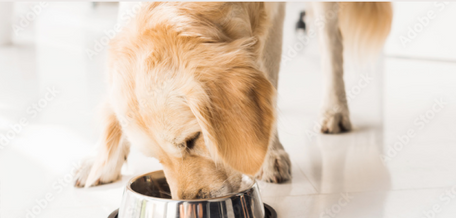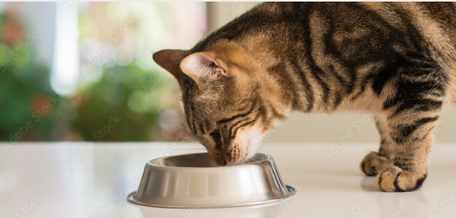
The raw food diet for dogs has become a hot topic among pet owners. While some believe it offers great health benefits, many veterinarians express caution. This article dives into what vets really think about raw diets for dogs, covering both the positives and the negatives. By understanding their insights, pet owners can make better choices for their furry friends.
Key Takeaways
-
Consult with a veterinarian before starting a raw food diet for your dog.
-
Raw diets can improve digestion and energy levels, but they may not suit all dogs.
-
Bacterial contamination is a major concern with raw meat diet for dogs; safe handling is essential.
-
A balanced raw diet is crucial to avoid nutritional deficiencies.
-
High-quality commercial raw food options can provide a safer alternative.
What do Veterinarians Think About Raw Food Diet for Dogs?
The raw food diet for dogs has become a hot topic among pet owners. Many are curious about its benefits and whether it’s the right choice for their furry friends. As this trend rises, it’s essential to understand what veterinarians really think about it.
Veterinarians offer valuable insights into the raw food diet, highlighting both its advantages and potential risks. They emphasize the importance of a balanced approach, ensuring that pet owners are well-informed before making dietary changes. For instance, knowing foods you should not give your dogs is crucial for their health and safety. Consulting with a vet can help tailor a diet that meets each dog's unique needs, ensuring a safe transition to raw feeding.
"Transitioning to a raw diet can be beneficial, but it requires careful planning and consultation with a veterinarian to avoid nutritional imbalances."
The Benefits of a Raw Food Diet According to Vets

1. Improved Digestion and Nutrient Absorption
Many veterinarians have observed that dogs on a raw food diet often show improved digestion and better nutrient absorption. This is largely due to the high protein content and the absence of fillers found in many commercial dog foods. Some vets report that dogs experience healthier coats and increased energy levels when fed raw diets.
-
Key Benefits Noted by Vets:
-
Enhanced digestion
-
Increased energy levels
-
For instance, one veterinarian mentioned, "The raw food diet can lead to fewer gastrointestinal issues compared to traditional kibble." This aligns with findings that suggest raw diets can enhance protein and fat digestibility, supporting overall health.
2. Better Weight Management and Muscle Tone
Veterinarians have also noted that dogs fed a raw food diet tend to maintain healthier weights and exhibit better muscle tone. The natural ingredients in raw diets can help dogs achieve a leaner physique.
-
Observations from Vets:
-
Dogs often have healthier body weights
-
Improved muscle mass
-
In summary, many vets advocate for raw diets as they can lead to significant health improvements in dogs, making it a popular choice among pet owners.
"A raw food diet for dogs can be beneficial, but it’s essential to ensure it’s balanced and safe."
The Risks and Concerns Raised by Veterinarians
1. Bacterial Contamination
One major concern veterinarians have about a raw food diet is the risk of bacterial contamination. Raw meat can carry harmful bacteria like Salmonella, which can affect both pets and humans. Proper handling and sourcing of raw food are crucial to minimize these risks. Here are some key points to consider:
-
Always wash your hands after handling raw meat.
-
Use separate cutting boards for raw pet food and human food.
-
Store raw food in the refrigerator and use it within a few days.
Research shows that safe handling can significantly reduce the chances of bacterial transmission. For more information on safe practices, check out the AVMA resource on safe handling.
2. Nutritional Imbalance
Another concern is the potential for nutritional imbalances in a raw food diet. If not properly balanced, dogs may suffer from deficiencies or excesses in essential nutrients. Veterinarians recommend consulting with a professional to ensure that your dog's diet is well-rounded. Here are some tips to avoid nutritional issues:
-
Include a variety of protein sources, such as muscle meat, organs, and bones.
-
Consider adding supplements to fill any gaps in nutrition.
-
Regularly consult with your veterinarian to adjust the diet as needed.
In summary, while a raw food diet can offer benefits, it’s essential to be aware of the risks and take steps to mitigate them.
"A well-informed approach to feeding your dog can lead to a healthier and happier life."
For more insights on raw diets, visit BJ's Raw Pet Food for high-quality options that prioritize safety and nutrition.
Best Practices for Implementing a Raw Food Diet Subsection
Consult with a Veterinarian
Before starting a raw food diet, it’s crucial to consult with a veterinarian who has experience in canine nutrition. They can help you understand your dog’s specific needs and ensure that the diet is safe and balanced.
Safe Handling and Preparation
Proper handling and preparation of raw food is essential to prevent contamination. Here are some tips:
-
Always wash your hands before and after handling raw meat.
-
Use separate cutting boards for raw meat and other foods.
-
Store raw food in the refrigerator and use it within a few days.
-
Clean all surfaces and utensils thoroughly after use.
Balanced Nutrition
Creating a balanced raw food meal plan is vital. Here are some key components to include:
-
Muscle meat: This should be the main part of the diet.
-
Organs: Include liver and kidneys for essential nutrients.
-
Bones: Raw bones can provide calcium but should be given with caution.
-
Supplements: Consider adding vitamins and minerals to ensure a complete diet.
Remember, a well-balanced raw diet can lead to better health for your dog, but it requires careful planning and knowledge.
By following these best practices, you can help ensure that your dog enjoys the benefits of a raw food diet while minimizing potential risks.
BJ’s Raw Pet Food is a great option for those looking for pre-formulated meals that meet nutritional standards, making it easier to provide a balanced diet for your furry friend.
Choosing the Right Raw Food for Your Dog

Commercial Raw Food Options
When considering a raw food diet for dogs, many veterinarians suggest starting with high-quality commercial products. These options are designed to meet nutritional standards, ensuring your dog gets the right balance of nutrients. Choosing a reputable brand can make a significant difference in your dog's health.
Here are some key points to consider when selecting commercial raw food:
-
Look for brands that use fresh, whole ingredients.
-
Ensure the food is formulated to meet AAFCO standards.
-
Check for transparency in sourcing and processing.
One brand that stands out is BJ’s Raw Pet Food. They are committed to providing balanced raw meals that prioritize quality and safety. Their products are crafted to support your dog's overall health, making them a trusted choice for pet owners.
Homemade Raw Diets
If you prefer to prepare your dog's meals at home, it’s crucial to consult with a veterinarian or a pet nutritionist. This ensures that you create a balanced meal plan that includes:
-
Muscle meat
-
Organ meats
-
Raw bones
-
Vegetables and fruits
-
Supplements as needed
Important Considerations
-
Nutritional Imbalance: Many homemade diets can lead to deficiencies if not properly balanced.
-
Safety: Always handle raw meat with care to prevent bacterial contamination.
Remember, transitioning to a raw meat diet for dogs should be done gradually to avoid digestive upset. Consulting with a vet can help tailor the diet to your dog's specific needs.
Conclusion
In summary, veterinarians provide valuable insights into the raw food diet for dogs. They highlight both the benefits and the potential risks associated with this feeding method. While many vets acknowledge improvements in digestion and energy levels, they also caution about the dangers of bacterial contamination and nutritional imbalances.
If you're considering a raw food diet for your dog, it's essential to consult with your veterinarian. They can help you explore balanced options, such as BJ’s Raw Pet Food, which is committed to providing safe and nutritious meals. Making an informed decision can lead to a healthier and happier life for your furry friend!
In conclusion, taking care of your pets is essential, and feeding them the right food can make a big difference in their health. If you want to give your furry friends the best, visit our we]
\site to explore our range of raw pet food options. Your pets deserve the best!
Frequently Asked Questions
What are the benefits of a raw food diet for dogs?
Many vets believe that a raw food diet can improve a dog's digestion, coat quality, and energy levels. Raw food often contains high protein and fewer fillers, which can contribute to better overall health.
Are there risks associated with feeding dogs raw food?
Yes, there are risks, such as bacterial contamination from raw meat, which can be harmful to both dogs and humans. It's important to handle raw food safely to avoid these issues.
How can I ensure my dog gets a balanced raw food diet?
Consulting with a veterinarian is crucial. They can help create a meal plan that includes the right mix of muscle meat, organs, bones, and supplements to meet your dog's nutritional needs.
What should I do if my dog has health issues?
If your dog has health issues like kidney problems or is on medication, it's best to consult your vet before switching to a raw food diet. Some conditions may require a different approach.
What are some recommended commercial raw food brands?
Many vets suggest starting with high-quality commercial raw food brands that meet nutritional standards. Brands like BJ’s Raw Pet Food are known for their commitment to quality.
How do I safely prepare and store raw dog food?
Make sure to wash your hands thoroughly after handling raw food, and clean any surfaces or utensils used. Store raw food in the refrigerator or freezer to keep it safe.




















